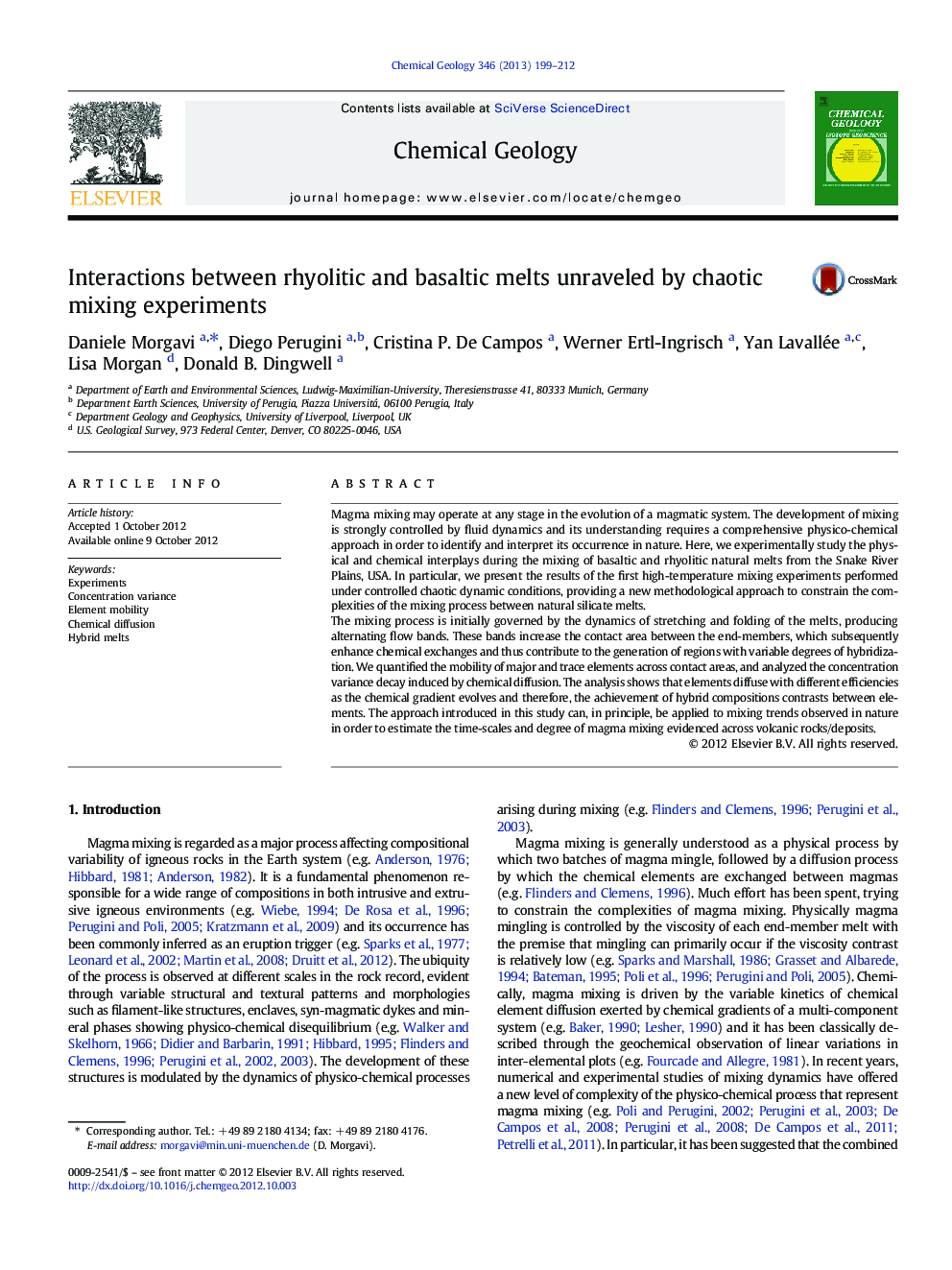| Article ID | Journal | Published Year | Pages | File Type |
|---|---|---|---|---|
| 4699023 | Chemical Geology | 2013 | 14 Pages |
Magma mixing may operate at any stage in the evolution of a magmatic system. The development of mixing is strongly controlled by fluid dynamics and its understanding requires a comprehensive physico-chemical approach in order to identify and interpret its occurrence in nature. Here, we experimentally study the physical and chemical interplays during the mixing of basaltic and rhyolitic natural melts from the Snake River Plains, USA. In particular, we present the results of the first high-temperature mixing experiments performed under controlled chaotic dynamic conditions, providing a new methodological approach to constrain the complexities of the mixing process between natural silicate melts.The mixing process is initially governed by the dynamics of stretching and folding of the melts, producing alternating flow bands. These bands increase the contact area between the end-members, which subsequently enhance chemical exchanges and thus contribute to the generation of regions with variable degrees of hybridization. We quantified the mobility of major and trace elements across contact areas, and analyzed the concentration variance decay induced by chemical diffusion. The analysis shows that elements diffuse with different efficiencies as the chemical gradient evolves and therefore, the achievement of hybrid compositions contrasts between elements. The approach introduced in this study can, in principle, be applied to mixing trends observed in nature in order to estimate the time-scales and degree of magma mixing evidenced across volcanic rocks/deposits.
► Mixing of natural silicate melts plays a crucial role in planetary evolution. ► Mixing experiments are performed using melts from the Snake River plain. ► Chaotic mixing produces highly heterogeneous compositional domains. ► Chemical element mobility is quantified by the concentration variance. ► Chaotic mixing produces a diffusive fractionation of chemical elements.
